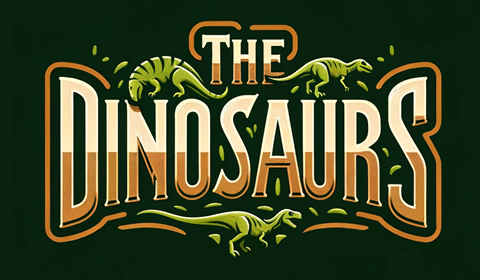When we think of dinosaurs, our minds often conjure images of colossal, fearsome creatures that roamed the Earth millions of years ago. Among these ancient giants, the Iguanodon holds a special place. Discovered in the early 19th century, this herbivorous behemoth has captivated the imagination of scientists and enthusiasts alike. Let’s embark on a journey through time, unraveling the mysteries of the Iguanodon, a creature that thrived during the Early Cretaceous Period.
Iguanodon Key Facts
| Keyword | Fact |
|---|---|
| Pronunciation | eeg-WAHN-oh-don |
| Meaning of name | Iguana Tooth |
| Group | Ornithopod |
| Type Species | Iguanodon bernissartensis |
| Diet | Herbivore |
| When it Lived | 157.3 to 110 MYA |
| Period | Early Cretaceous |
| Epoch | Kimmeridgian to Aptian |
| Length | 30.0 to 36.0 feet |
| Height | Approximately 11.0 feet |
| Weight | 5.0 tons |
| Mobility | Moved on four legs |
| First Discovery | 1822 by Mary Ann Mantell |
| Location of first find | Tilgate Forest, Sussex, England (Type species found in Bernissart, Belgium) |
| Also found in | Belgium, France, Germany, India, Portugal, Romania, Spain, Sudan, USA (Texas) |
| First Described by | 1881 by George Albert Boulenger |
| Holotype | IRSNB 1534 |
Iguanodon Origins, Taxonomy and Timeline
The Iguanodon, aptly named “Iguana Tooth” for its iguana-like teeth, has a fascinating and somewhat convoluted history of discovery and classification. Initially, the species Iguanodon anglicus, based on a single tooth, was thought to represent the genus. However, this classification was later reconsidered due to the scant nature of the remains.
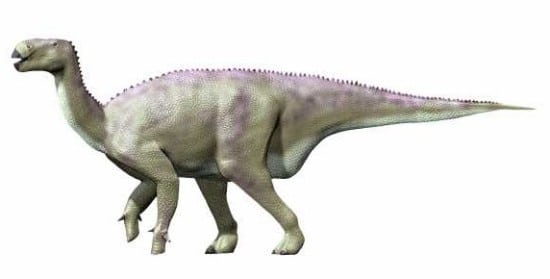
In a significant turn of events, the International Commission on Zoological Nomenclature, in March 2000, changed the type species to the much better known Iguanodon bernissartensis. This decision was based on the abundance and quality of the fossil evidence, with the new holotype being designated as IRSNB 1534.
Belonging to the Ornithopoda group and the iguanodontid family, the Iguanodon’s timeline stretches impressively, from possibly the Kimmeridgian to Aptian Age, approximately 157.3 to 110 million years ago.
Discovery & Fossil Evidence
The story of the Iguanodon’s discovery is as intriguing. While Mary Ann Mantell’s find in 1822 in Sussex, England, marked the first known discovery of this dinosaur, it was not until later that the Iguanodon’s name would be solidified by Gideon Mantell in 1825.
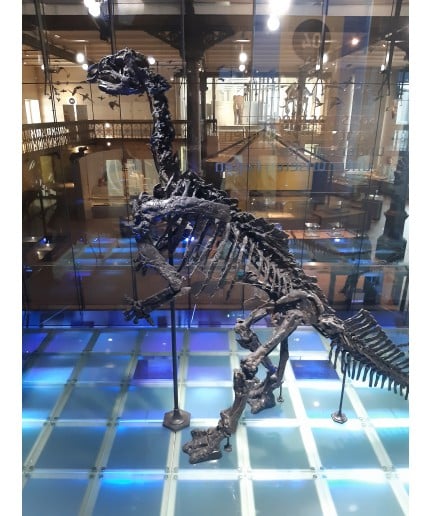
The most significant discovery occurred on February 28, 1878, in a coal mine at Bernissart, Belgium. Mineworkers Jules Créteur and Alphonse Blanchard stumbled upon a skeleton, initially mistaken for petrified wood, at a depth of 1,056 feet underground. This find, which turned out to be Iguanodon remains, was the largest of its kind to that date.
The subsequent description by George Albert Boulenger in 1881, based on these well-preserved remains, provided a more accurate and comprehensive understanding of the Iguanodon, leading to the introduction to the species Iguanodon bernssartensis and its designation as the type species for the genus.
Iguanodon Size and Description
The Iguanodon, particularly the well-documented species Iguanodon bernissartensis, boasts a remarkable anatomy. Its head, characterized by robust jaws and those iconic iguana-like teeth, was well-adapted for a herbivorous diet. The neck, supporting a series of strong vertebrae, connected the head to a sturdy, well-proportioned body.
One of the most notable features of the Iguanodon was its limbs, as the dinosaur was able to walk on four legs. The tail, long and muscular, provided balance and potentially served as a defensive tool. While the exact texture and color of its skin remain speculative, it likely offered protection and possibly camouflage in its natural habitat.
Size and Weight of Type Species
Based on the type species, Iguanodon bernissartensis, we have a fairly clear picture of the size and weight of this prehistoric giant. This species, thanks to the wealth of fossil evidence, particularly from the Bernissart mine, has provided us with a lot of fossils to base estimates upon.
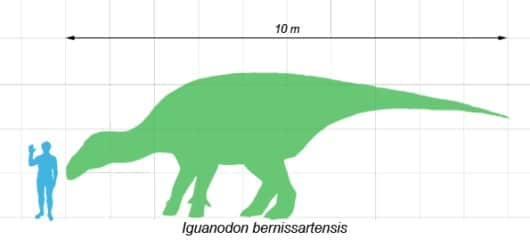
The Iguanodon bernissartensis was a substantial dinosaur, with adult individuals estimated to have measured about 30.0 feet in length. The maximum body length estimated for this species reaches an impressive 36.0 feet. In terms of weight, estimates for Iguanodon bernissartensis vary, but generally fall between 3.4 to 4.2 tons. These figures reflect its robust build and significant presence in the Early Cretaceous landscapes.
Iguanodon in Detail
The Iguanodon stands out not just for its size but for a range of unique features that set it apart from other dinosaurs. One of its most distinctive characteristics was its thumb spike, a peculiar adaptation that has puzzled and fascinated paleontologists. This spike, potentially used for defense or foraging, highlights the Iguanodon’s adaptability and survival instincts.
Notable specimens, such as those found in Belgium’s Bernissart coal mine, have been instrumental in expanding our understanding of this dinosaur. With numerous complete specimens, these well-preserved fossils have shed light on the Iguanodon’s anatomy, behavior, and place in the prehistoric world. If you visit the Royal Museum in Brussel, you will note that the skeletons are presented as bipedial animals. Those are the specimens that were presented to the public in the late 1800s, and the display equipement were custom made for them. We know now that Iguanodon was quadrupedal. However the Royal Museum chose to kept the Iguanodon displayed on two legs, as a note to the history of paleontology, showing that our understanding of dinosaur evolves with new analyses and discoveries.
Iguanodon Illustration Sketch
Contemporary Dinosaurs
Imagine the Iguanodon, a robust, herbivorous giant, larger than many of its contemporaries, ambling through the dense foliage. Its life, however, was far from peaceful. The Iguanodon had to constantly navigate a complex web of relationships with its contemporaries, each interaction a delicate dance of survival and coexistence.
Take the Baryonyx, for instance, a fearsome predator with crocodile-like jaws. It was slightly smaller than our main dinosaur but no less intimidating. Imagine the tension in the air as an Iguanodon encountered a Baryonyx near a water source. While the Iguanodon was not its preferred prey, hunger could drive the Baryonyx to attempt an audacious hunt. The Iguanodon, though primarily a gentle giant, had strong limbs and thumb spikes, tools it could use in a defensive waltz against such predators.
Then there was the Hypsilophodon, a sprightly creature, much smaller than the Iguanodon. These little dinosaurs likely scampered around the Iguanodon’s feet, perhaps feeding on the scraps of vegetation left behind by the larger herbivore. Their relationship, though not intimate, was a subtle nod to the interconnectedness of their ecosystem.
The Iguanodon also shared its world with the Polacanthus and Hylaeosaurus, both armored dinosaurs, roughly the same size as the Hypsilophodon. These contemporaries probably didn’t compete directly with the Iguanodon for food, given their differing dietary preferences, but they might have vied for territory. Picture the Iguanodon, a gentle giant amidst these armored beings, a testament to the diversity and complexity of their ancient world.In this prehistoric world, the Iguanodon stands as a central figure. In each interaction, whether tense or benign, dinosaurs large or small, played a role in the grand story of life.
Iguanodon Games
Test (and refresh) your knowledge about Iguanodon and other dinosaurs by playing this fun quiz:
Don’t forget to try our other games as well!
Interesting Points about Iguanodon
- The Iguanodon was one of the first dinosaurs to be introduced to the public in 1822, marking a significant milestone in paleontological history. The first dinosaur to be formally described in Megalosaurus in 1824 by William Buckland, followed by Iguanodon itself in 1827 by the geologist Dr. Gideon Mantell. The name Dinosauria would only be introduced in 1852 by Sir Richard Owen.
- Its thumb spike, a unique evolutionary feature, has sparked numerous theories regarding its use and significance.
- The widespread discovery of Iguanodon fossils across multiple continents indicates a broad distribution and diverse habitats.
- The Iguanodon’s teeth, resembling those of modern iguanas, offer a fascinating link between prehistoric and contemporary creatures.
Iguanodon in its Natural Habitat
The Iguanodon thrived in a world vastly different from our own. During the Early Cretaceous, it roamed landscapes characterized by a diverse array of climates and geographies. The vegetation of the time, lush and abundant, provided ample food for this herbivorous giant.
As a plant-eater, the Iguanodon’s diet consisted of a variety of vegetation, which it likely browsed with its specialized teeth. Its locomotion, capable of shifting between bipedal and quadrupedal movement, suggests a versatile approach to foraging and navigating its environment.
The Iguanodon’s social behavior remains a subject of intrigue. Whether it was a solitary wanderer or a herd animal is a question that continues to captivate researchers. Its senses, too, played a crucial role in its survival, helping it detect food, predators, and perhaps even communicate with others of its kind.
The impact of the Iguanodon on its ecosystem was undoubtedly significant. As a large herbivore, it likely played a role in shaping the landscape, influencing plant growth, and contributing to the dynamic balance of its natural habitat.
Frequently Asked Questions
An Iguanodon tooth was first discovered in 1822 by Mary Ann Mantell.
The name Iguanodon means “Iguana-tooth,” reflecting the resemblance of its teeth to those of modern iguanas.
It lived mostly during the Early Cretaceous Period, approximately 157.3 to 110 million years ago.
Fossils have been found in various locations, including England, Belgium, France, Germany, India, Portugal, Romania, Spain, Sudan, and Texas.
The Iguanodon was a herbivore, feeding on a variety of plant matter.
Paleontologists thought at first that he would walk on two legs but recent analyses suggests that Iguanodon moved on four legs instead.
Sources
The information in this article is based on various sources, drawing on scientific research, fossil evidence, and expert analysis. The aim is to provide a comprehensive and accurate overview of the Iguanodon. However, please be aware that our understanding of dinosaurs and their world is constantly evolving as new discoveries are made.
- https://royalsocietypublishing.org/doi/10.1098/rstl.1825.0010
- https://www.sciencedirect.com/science/article/abs/pii/S019566711530001X
- https://www.gspauldino.com/Risingdiversity2011.pdf
- https://www.nhm.ac.uk/discover/the-discovery-of-iguanodon.html#:~:text=Discovered%20in%20Sussex%20in%201822,start%20our%20fascination%20with%20dinosaurs.
- https://www.researchgate.net/publication/286565579_Bernissart_and_the_iguanodons_Historical_perspective_and_new_investigations
This article was last fact-checked: Joey Arboleda, 11-04-2023
Gallery
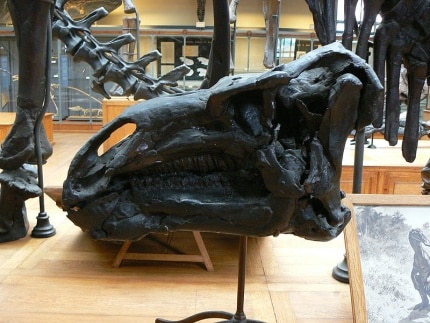 Iguanodon bernissartensis skull
Iguanodon bernissartensis skull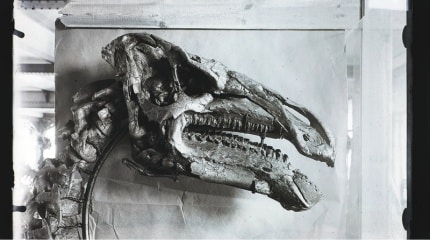 Iguanodon bernissartensis skull
Iguanodon bernissartensis skull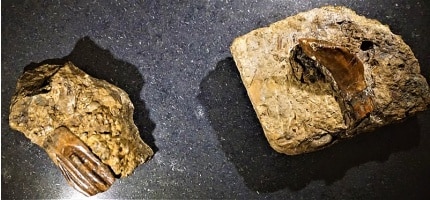 Iguanodon Teeth – Natural History Museum, London – Joy of Museums
Iguanodon Teeth – Natural History Museum, London – Joy of Museums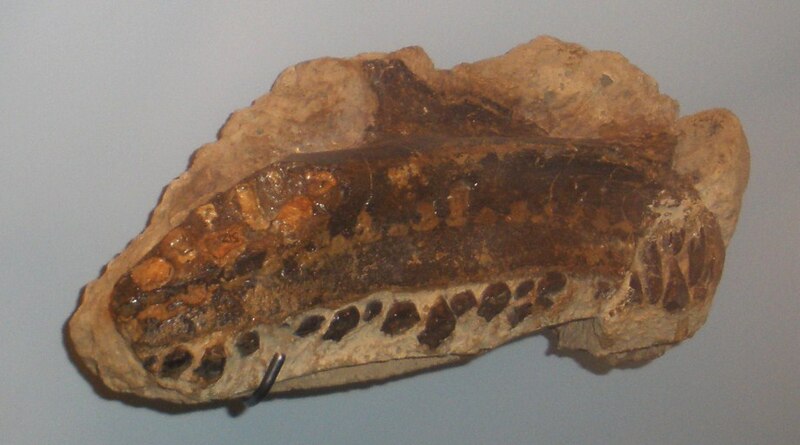 Fossil of Iguanodon, an ornithopod dinosaur Took the photo at Musee d’Histoire Naturelle, Brussels
Fossil of Iguanodon, an ornithopod dinosaur Took the photo at Musee d’Histoire Naturelle, Brussels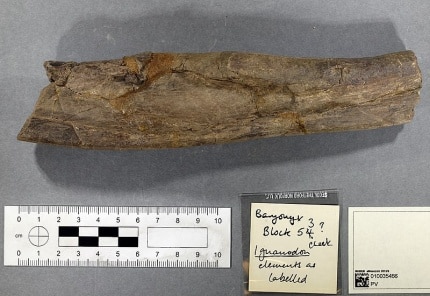 Iguanodon bone found with Baryonyx
Iguanodon bone found with Baryonyx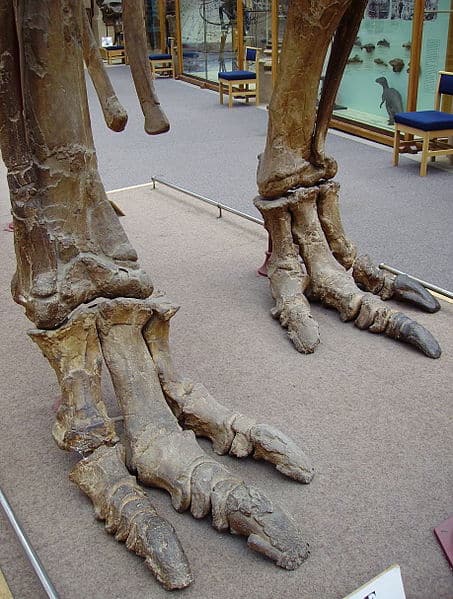 Three-toed Iguanodon feet
Three-toed Iguanodon feet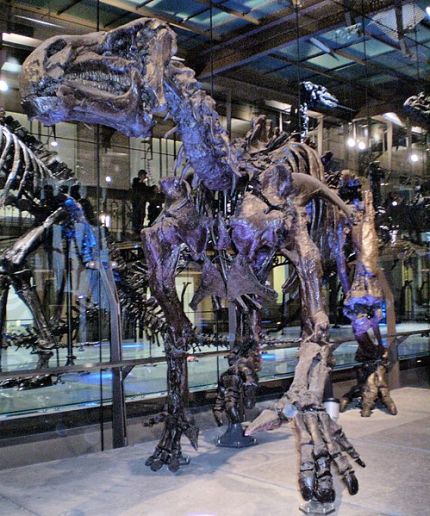 Iguanodon bernissartensis skeleton
Iguanodon bernissartensis skeleton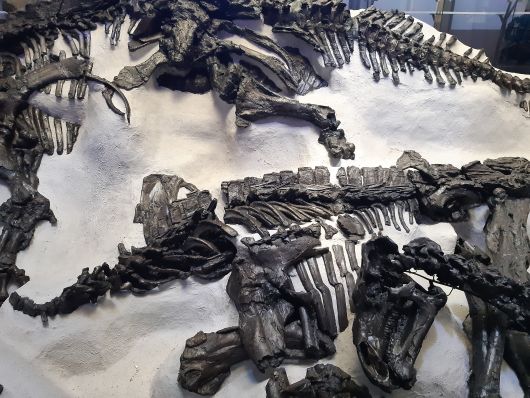 Iguanodon – Brussels by Alienor Duhamel
Iguanodon – Brussels by Alienor Duhamel
Featured Image Credit: Copyright (c) Thedinosaurs.org
